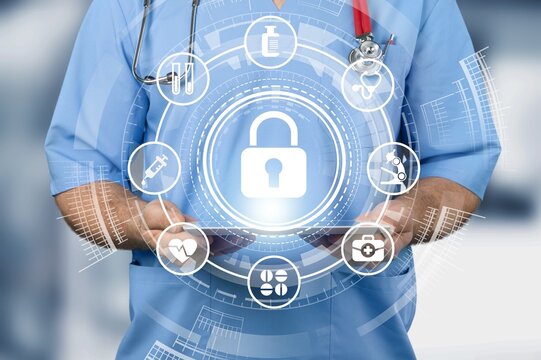Next-Gen Protections: Exploring Future Technologies in Healthcare Security

Strong 8k brings an ultra-HD IPTV experience to your living room and your pocket.
Introduction:
As healthcare systems continue to embrace digital transformation, the need for advanced cybersecurity measures to protect sensitive patient data becomes ever more critical. Cyber threats targeting healthcare organizations have evolved in complexity, demanding innovative solutions that can anticipate, detect, and neutralize potential attacks. This article explores the next-generation protections and future technologies shaping healthcare security, with a particular focus on AI-driven threat detection, a cutting-edge approach that is revolutionizing cybersecurity in healthcare systems.
The Evolving Cybersecurity Landscape in Healthcare
The healthcare industry is a lucrative target for cybercriminals, largely due to the value of medical records and personal data. Unlike financial information, which can be changed or canceled, medical records contain immutable personal information that can be exploited for various malicious purposes. The frequency and sophistication of cyberattacks, such as ransomware, phishing, and data breaches, have placed immense pressure on healthcare providers to strengthen their cybersecurity defenses.
Key Drivers for Advanced Healthcare Security Technologies
Several factors are propelling the development and adoption of next-gen healthcare security technologies:
1.Escalating Cyber Threats: The increasing frequency and complexity of cyberattacks require more sophisticated security solutions to protect healthcare systems.
2.Regulatory Demands: Compliance with laws such as HIPAA, GDPR, and other regional regulations necessitates the adoption of advanced data protection measures.
3.Technological Integration: The incorporation of IoT devices, cloud services, and telemedicine platforms in healthcare systems calls for robust security frameworks to safeguard data across diverse platforms.
AI-Driven Threat Detection: Enhancing Cybersecurity in Healthcare Systems
AI-driven threat detection is one of the most transformative technologies in healthcare cybersecurity. By leveraging Artificial Intelligence (AI) and machine learning (ML), healthcare organizations can enhance their ability to identify, analyze, and respond to cyber threats in real time.
Download FREE Sample of Artificial Intelligence Market
How AI-Driven Threat Detection Works
AI-driven threat detection systems use machine learning algorithms to analyze vast amounts of data, identify patterns, and detect anomalies indicative of potential cyber threats. These systems continuously learn and adapt to new threats, improving their accuracy and reducing false positives over time. The key components of AI-driven threat detection in healthcare include:
Behavioral Analytics: Monitoring user behavior to identify deviations that could indicate compromised accounts or insider threats.
Predictive Analysis: Using historical data to predict potential security breaches and proactively mitigate risks.
Automated Response: Triggering automated security measures, such as isolating affected systems, to contain threats before they cause significant damage.
Benefits of AI-Driven Threat Detection in Healthcare
AI-driven threat detection offers several advantages over traditional cybersecurity measures:
Real-Time Monitoring: AI systems can continuously monitor network activity, providing real-time alerts and faster response times to potential threats.
Improved Accuracy: Machine learning algorithms enhance the accuracy of threat detection by minimizing false positives and identifying subtle indicators of advanced persistent threats (APTs).
Scalability: AI-driven solutions can easily scale to accommodate the growing volume of data generated by healthcare systems, ensuring comprehensive coverage.
Cost Efficiency: By automating threat detection and response, AI reduces the reliance on human intervention, lowering operational costs and enabling security teams to focus on strategic tasks.
Applications of AI-Driven Threat Detection in Healthcare
AI-driven threat detection can be applied in various areas of healthcare cybersecurity, including:
Network Security: Protecting healthcare networks from intrusions, malware, and unauthorized access.
Endpoint Protection: Securing devices such as computers, mobile devices, and IoT medical devices against cyber threats.
Data Security: Ensuring the confidentiality and integrity of patient records and sensitive information.
Compliance Monitoring: Assisting healthcare providers in maintaining compliance with regulatory standards by continuously monitoring and reporting security incidents.
Other Emerging Technologies in Healthcare Security
While AI-driven threat detection is at the forefront of next-gen healthcare security, several other technologies are contributing to a more secure healthcare environment:
Blockchain for Data Integrity
Blockchain technology provides a decentralized approach to securing healthcare data. By using cryptographic techniques to create an immutable ledger, blockchain ensures that patient data cannot be altered or tampered with, providing transparency and trust.
Quantum Encryption
Quantum encryption leverages quantum mechanics to secure data transmission, offering a level of security that is theoretically immune to hacking. This technology is particularly promising for protecting sensitive healthcare data during transmission between providers.
Zero Trust Security Models
The Zero Trust model operates on the principle of "never trust, always verify," ensuring that no user or device is trusted by default. This approach enhances security by requiring continuous authentication and authorization for access to sensitive data and systems.
Biometric Authentication
Biometric technologies, such as fingerprint and facial recognition, provide secure and convenient methods for verifying the identity of healthcare professionals and patients, reducing the risk of unauthorized access.
Challenges and Future Directions
Despite the promise of next-gen healthcare security technologies, several challenges remain:
Integration Complexity: Implementing advanced security solutions within existing healthcare IT infrastructures can be complex and resource-intensive.
Cost Considerations: The high cost of deploying and maintaining cutting-edge security technologies may be a barrier for smaller healthcare providers.
Privacy Concerns: The use of AI and data analytics raises concerns about patient privacy and the ethical use of personal data.
Looking ahead, the healthcare industry must continue to innovate and invest in next-gen protections to stay ahead of emerging cyber threats. Collaboration between healthcare providers, technology developers, and regulatory bodies will be essential to ensure that new technologies are effectively implemented and that patient data remains secure.
Conclusion
The future of healthcare security lies in the adoption of next-gen technologies, with AI-driven threat detection leading the charge. By harnessing the power of artificial intelligence and machine learning, healthcare organizations can enhance their cybersecurity posture, protecting sensitive data from increasingly sophisticated threats. As other technologies like blockchain, quantum encryption, and Zero Trust models continue to evolve, the healthcare sector must stay proactive in embracing these innovations to ensure the highest levels of data security and patient trust.
Read the complete blog
Note: IndiBlogHub features both user-submitted and editorial content. We do not verify third-party contributions. Read our Disclaimer and Privacy Policyfor details.


